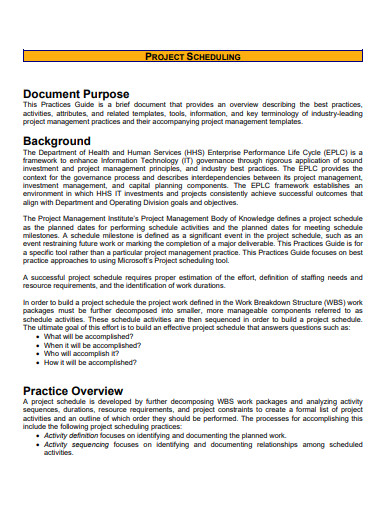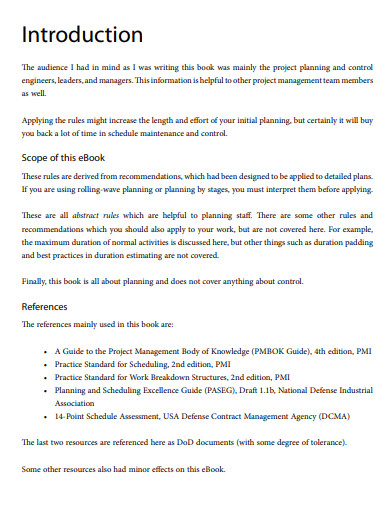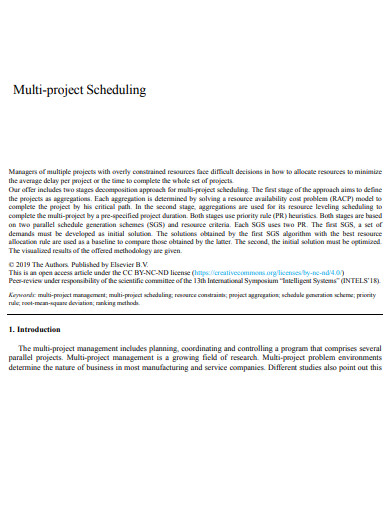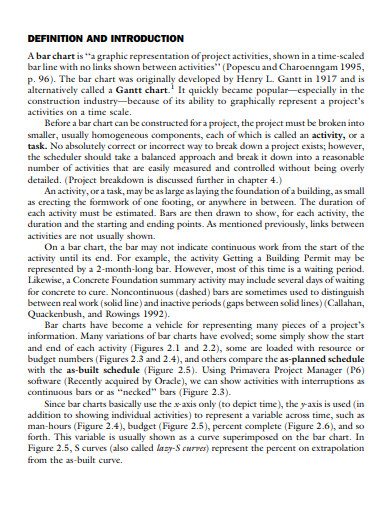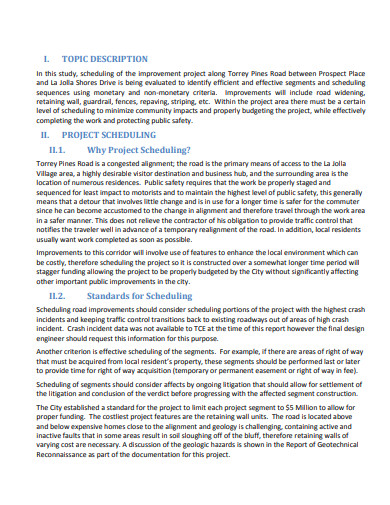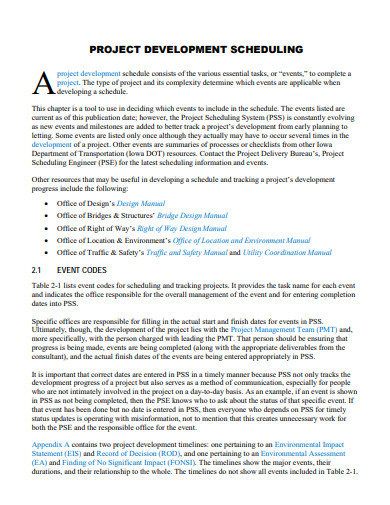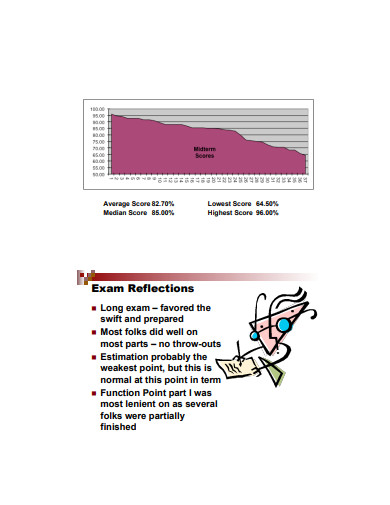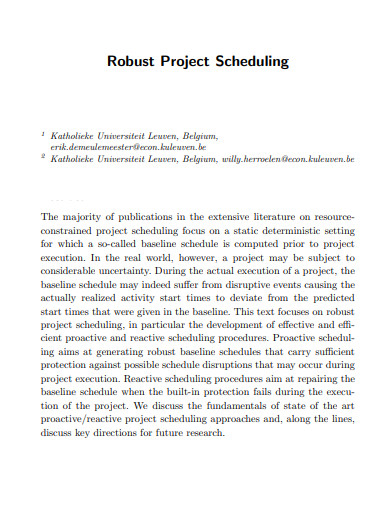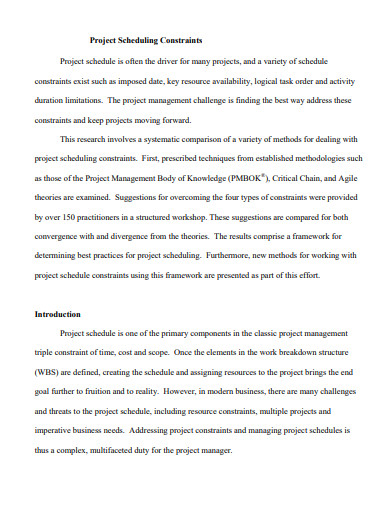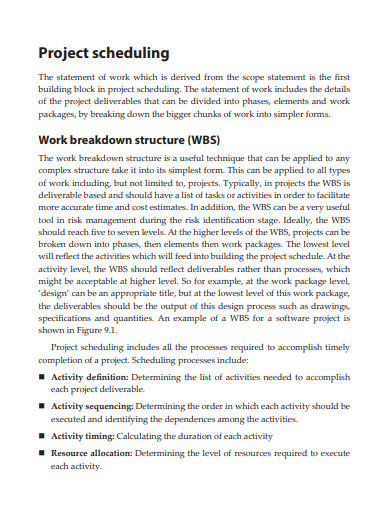10+ Project Scheduling Samples
Your total cost performance and ability to achieve project deadlines define the success of a project. To manage expenditures and keep the project on schedule, project managers must be able to effectively distribute time and resources. Almost every company looks for project management abilities since they demonstrate your capacity to stay organized and communicate with coworkers, which is especially important when working on large projects. That is why project planning is crucial. Need some help with making your schedule for your project? We’ve got you covered! In this article, we provide you with free and ready-made samples of Project Scheduling in PDF and DOC format that you could use for your benefit. Keep on reading to find out more!
1. Project Scheduling
2. Project Scheduling Rules Template
3. Multi Project Scheduling
4. Construction Project Scheduling
5. Sample Project Scheduling
6. Project Development Scheduling
7. Software Project Scheduling
8. Robust Project Scheduling
9. Project Scheduling Constraints
10. Project Scheduling Example
11. Printable Project Scheduling
What is a project scheduling?
The project schedule is a document used in project management to plan, execute, monitor/control, and communicate the scope delivery to stakeholders provided it is correctly created. The timetable, resources required, and actuality of project delivery are all determined by project scheduling, which is equally as crucial as cost planning. Experienced project managers are better at dictating the tasks, time, and money needed to execute a project. In its simplest form, a project schedule might simply a chart of work items with related schedule dates for when those work elements and milestones are expected to occur.
How to make a project scheduling
The project schedule is used to convey to all stakeholders when particular work pieces and project events are scheduled to be completed, in addition to guiding the work. A Project Scheduling Template can help provide you with the framework you need to ensure that you have a well-prepared and robust scheduling on hand. To do so, you can choose one of our excellent templates listed above. If you want to write it yourself, follow these steps below to guide you:
1. Define your project’s objectives.
Make a list of the critical milestones or deliverables that will ensure the project’s success in the end.
2. Identify all parties involved.
Make a list of everyone who needs to be a part of your project, even if their only responsibility is to sign off.
3. Establish a final deadline.
Finally, you must choose when you will conclude the job. Allow enough time to allow for the inevitable disagreements that will inevitably arise.
4. Each stage or assignment should be listed and assigned to someone.
Break down the milestones and deliverables you set in Step 1 into smaller tasks and subtasks to ensure you’ve covered all of your bases. Decide who will be in charge of each job and subtask, and be open about deadlines. Keep in mind that your coworkers are likely working on other tasks at the same time. Make sure they don’t feel overburdened by their workload.
5. Set due dates for each assignment by working backwards.
Determine how long each activity will take, keeping in mind that delays are unavoidable. Sequencing is also crucial to consider since certain activities must be completed before others may begin.
6. Finally, distribute it to your team.
Team members will have a clear understanding of their project tasks and will be able to provide feedback on their parts of the plan if you share your project schedule. Begin by providing the project schedule to all participants and requesting specific input.
FAQ
What are the five steps involved in project planning?
The five phases of most projects are commencement, definition, and planning, execution, implementation, control, and closing.
What makes a project schedule effective?
A excellent project schedule illustrates how things are going in relation to the plan. The key work streams and critical route, as well as intermediate milestones for tracking progress, should all be included.
What are the different scheduling methods?
The Critical Path Method, Program Evaluation and Review Technique, Fast-tracking and Crashing, and Gantt charts are four common scheduling approaches used by project managers.
You may design each step and establish its duration with a project calendar, generate tasks and subtasks, and allocate them to the proper individual by developing and maintaining your project schedule in a centralized system. To help you get started, download our easily customizable and comprehensive samples of Project Scheduling today!
Related Posts
FREE 10+ Employees Schedule Samples in PDF
FREE 10+ On Call Schedule Samples in PDF
FREE 10+ Time Block Schedule Samples in PDF
FREE 10+ Gym Schedule Samples in PDF | MS Word | Apple Pages | Google Docs | Keynote |
FREE 10+ Daily Hourly Schedule Samples in PDF
FREE 10+ Weekly Schedule Template with Hours Samples in PDF
FREE 10+ 7 Day Weekly Schedule Samples in PDF
FREE 10+ Working Schedule Template Samples in PDF
FREE 6+ Preschool Schedule Template Samples in PDF
FREE 10+ Daily School Schedule Samples in PDF | MS Word | Google Docs | Google Sheets | Excel
FREE 10+ Day Schedule Samples in PDF
FREE 10+ Daily Work Schedule Samples in PDF
FREE 10+ 24 Hours Schedule Samples in PDF | Word | Google Docs | Google Sheets | Excel | Apple Numbers | Apple Pages
FREE 10+ Baseball Schedule Samples in PDF
FREE 10+ Availability Schedule Samples in PDF

